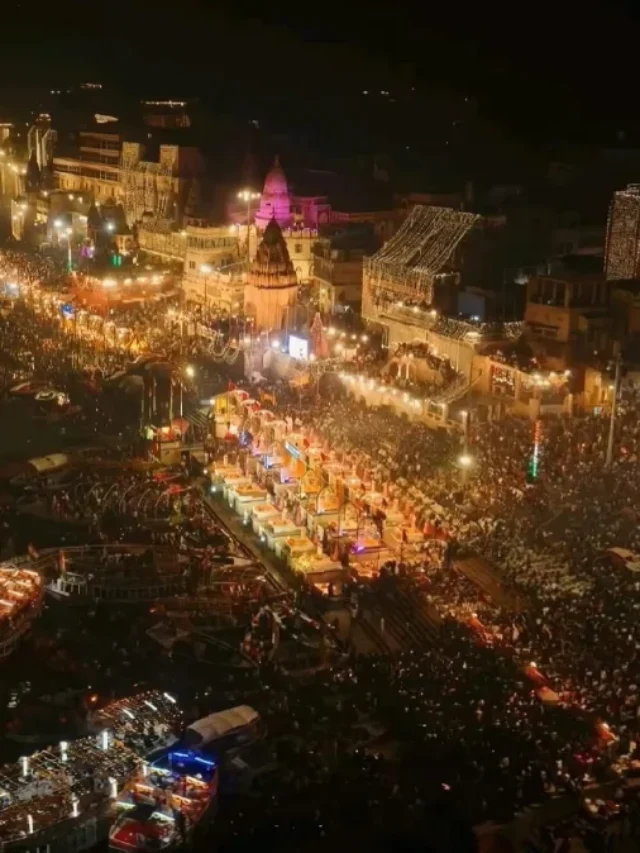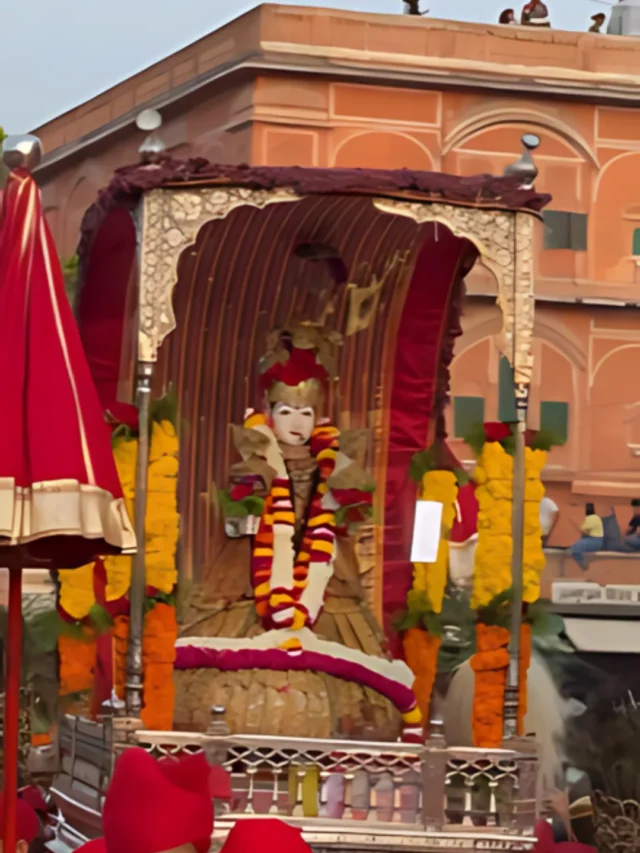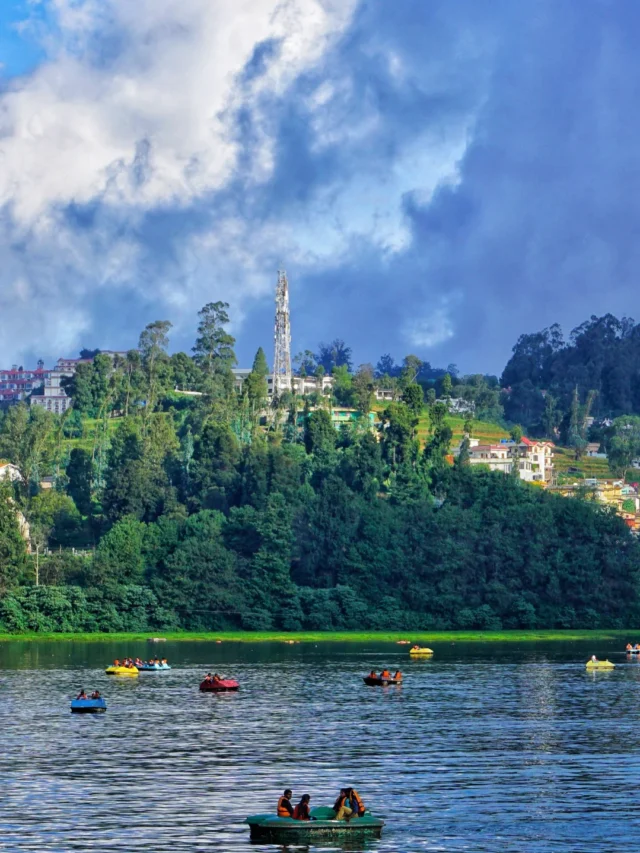Do you wish to see the stars up close? The Nubra Valley trek allows you to witness the magic of the night sky in Ladakh! Let’s look at the detailed overview of this amazing Trek for you to embark on!
Nubra Valley’s Starry Night
The sky of Nubra Valley looks as if it is right out of a Van Gogh painting! Situated in the northern region of Ladakh, India, Nubra Valley is a captivating scenery that enthrals tourists with its otherworldly beauty. The valley is a frigid, high-altitude desert encircled by craggy mountains, harsh dunes, and areas of verdant oasis. The valley is made even more picturesque by the Shyok River, which flows through it in a lovely manner.
The chilly desert landscape of Nubra Valley contrasted with the Himalayan peaks covered in snow is one of its most recognisable aspects. The sight created by the dunes of Hunder, where double-humped Bactrian camels may be seen strolling around, is unusual and almost surreal. The varied topography, from the lush Nubra River basin to the arid regions of Hundar and Diskit, provides a unique and remarkable visual extravaganza.
As tourists explore the area, they come across monasteries like Diskit Monastery, which are positioned above hills and offer stunning views of the valley below and spiritual comfort. The vivid prayer flags flapping in the breeze, the Ladakhi people’s warm welcome, and the simplicity of the nearby villages all add to its rich cultural diversity.
Nubra Valley is a stargazer’s dream come true at night and a visual feast during the day. The combination of the high altitude, dry air, and low light pollution makes for the perfect night sky. When the sun disappears behind the Himalayan peaks, the night sky shows a starry canvas covered with billions of stars.
Its clear night sky makes for an amazing show of planets, constellations, and, occasionally, the captivating Northern Lights. Stretching across the sky, the Milky Way illuminates the dunes and mountains with an ethereal radiance. The clean mountain air and the utter grandeur of the sky foster a strong sensation of oneness with the cosmos.
Nubra Valley camping beneath the stars is a breathtaking experience. The only sound that breaks the stillness of the night is the sporadic whisper of the wind, adding to the feeling of peace and loneliness. Visitors fall in love with the beauty that graces the Ladakhi nights as the night sky here unfolds like a cosmic tapestry, whether they are on top of a dune or in the valley’s centre. Nubra Valley is an incredible place for nature lovers and stargazers because this celestial show enhances the area’s natural splendour.
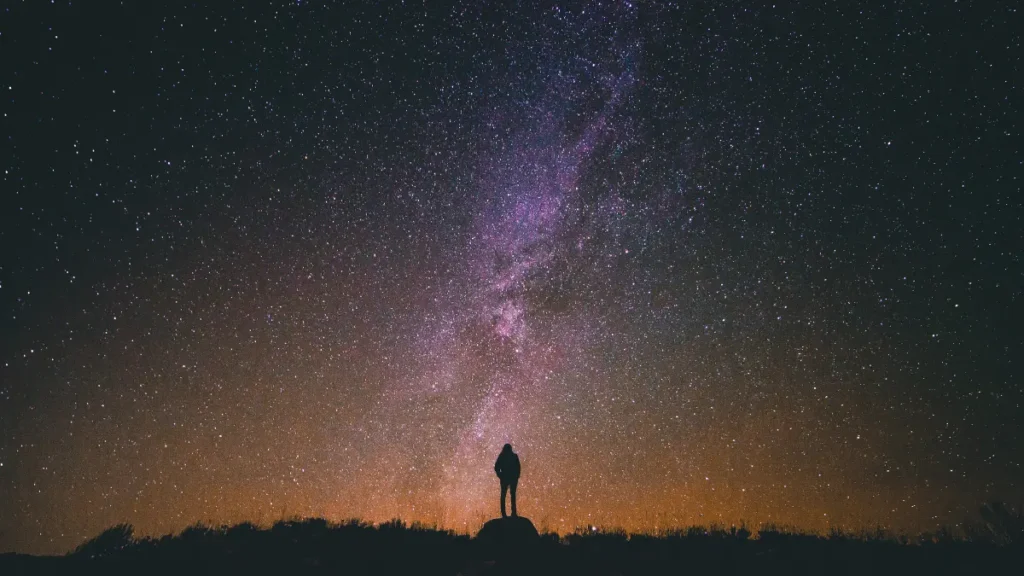
The Nubra Valley Trek
The Nubra Valley Trek opens up to beautiful geology after passing past Khardung La, the highest motorable road in the world. This area was once part of a trade route connecting India, Tibet, and Central Asia. It was an important platform used in parades that followed the Silk Road to exchange their donkeys for the renowned Bactrian camels with two mounds. The Nubra stream that flows through the region is a major tributary of the Shyok River, flowing parallel to the Indus on the northern edge of the Ladakh road. The Nubra River offers diverse flora, including orchids that contribute to the valley’s shade. The Nubra Valley Trek is one of the easiest moderate hikes in the Ladakh region, offering opportunities to explore Gompas, isolated settlements, and colourful, steep, and barren barriers.
The Nubra Valley Trek takes around 5 days to complete, with a total height gain of about 2000 metres and a total altitude decrease of over 2500 metres. The walk has a maximum elevation of 5438 metres and a total length of 59 km.
The journey goes via many high-altitude passes, including the 600-meter-high Digar La. You’ll travel via Khardung La Pass as well. The Nubra Valley Trek has long been well-known. It has drawn sincere hikers and mountaineers from all over the world. It is commonly referred to as the Valley of Flowers because, during the blooming season, a rainbow of vibrant blossoms may be seen here.
The well-known Nubra River, which runs parallel to the endless Indus River and is a tributary of the Shyok River, is open for exploration along the Nubra Valley Trek. On your journey, you will see diverse greenery, expansive orchards, desolate yet colourful mountains, a secluded settlement, and various Gompas. Aside from the scenery, one of the main draws of the Nubra Valley Trek is the monasteries along the route. Shey Gompa, Thiksey Gompa, and Hemis are well-known monasteries. On this walk, you will pass through distant villages like Khardung, Khalser, Agyam, Khalsr, Tirit, etc. You will witness Nubra’s renowned double-humped camels throughout your walk. Saddle up with the camels in Nubra’s immaculate, verdant meadows.
Nubra Valley Trek Itinerary – Day-to-Day and Detailed
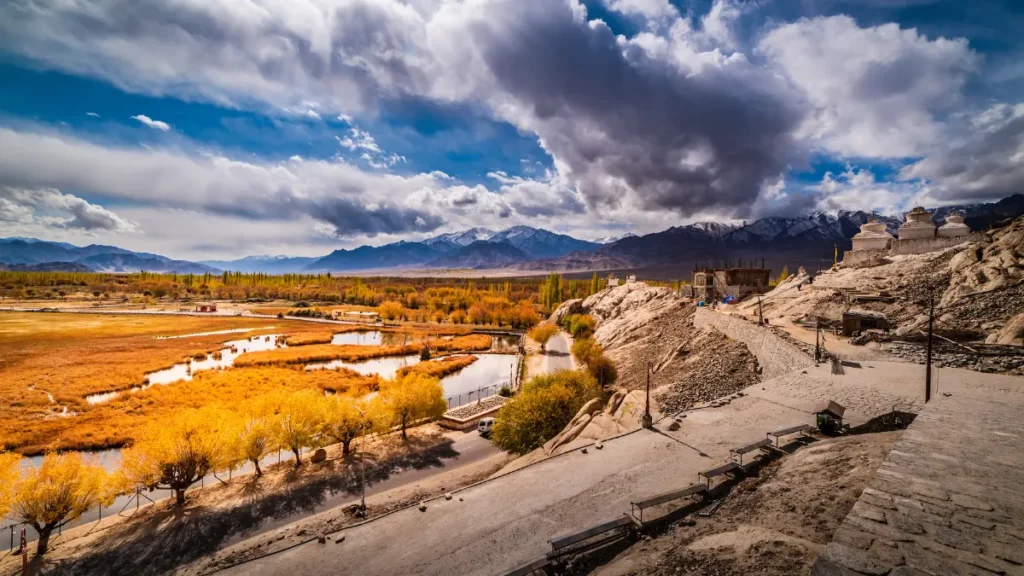
Day 1: Reaching Leh
The thin, high-altitude air greets visitors to Leh, nestled among the magnificent Ladakh scenery. Acclimatisation is the focus of the day to prevent altitude sickness. Rest and fluids are recommended to aid the body in acclimating to the lower oxygen levels. Visiting monasteries, marketplaces, and historic monuments in Leh town gives visitors an introduction to the area’s rich past while also offering a look into the distinctive Ladakhi culture.
Day 2: Leh to Hunder
On the spiritual path from Leh to Nubra Valley, visitors cross the thrilling Khardung La Pass, a unique entryway to the Himalayan highlands. At an incredible height of more than 18,000 feet, Khardung La is more than just a pass—it’s the ultimate adventure destination on the planet’s edge. An atmospheric change is brought about by the ascent over twisting roads; the air becomes thinner, and the surroundings transform into an untamed tapestry of breathtaking beauty.
· With towering snow-capped peaks on each side, the car winds over winding roads, leading to breathtaking views of valleys and peaks that serve as watchtowers over the sky. The rough and breathtaking Himalayan landscape transforms into a work of art showcasing the majesty of nature, beckoning visitors to lose themselves in the overwhelming beauty of their surroundings.
· The reward for reaching the peak is breathtaking panoramic views. With sweeping vistas across valleys sheltered by surrounding hills, the fresh mountain air brings a sense of accomplishment and fosters an intimate contact with the majesty of the Himalayan landscape.
· The scenery changes as it descends from this high vantage point. The trip continues into the Nubra Valley, where the untamed splendour of Ladakh becomes apparent. The visual symphony that highlights the expedition’s attractiveness is the change from the barren expanse of high-altitude passes to the lush embrace of the Nubra Valley bottom.
· Reaching Hunder, a charming town tucked away in the centre of Nubra Valley, is a perfect fusion of relaxation and exploration. The community, surrounded by mountains, offers a peaceful retreat for rest and recovery before the next walk. The calm atmosphere combined with the excitement of discovery captures the essence of this unique journey, where the peace of Ladakhi landscapes and the unwavering spirit of the Himalayas meet to create a journey that is beyond ordinary and leaves a lasting impression on the spirit.
Day 3: Hunder to Diskit
The walk from Hunder to Diskit is a fascinating adventure in the heart of Nubra Valley, where the scenery is danced with poetry with each step you take. The route meanders through a gorgeous area with golden dunes, uncommon in the high-altitude regions. Trekkers will come across historic monasteries sitting atop hills, silently recording the passing of time as they make their way across this distinctive terrain.
· Achieving Diskit is a spiritual and cultural climax, as it is the oldest and greatest monastery in the area. With its high prayer flags and whitewashed façade, the monastery stands out against the rough rocks in the background. Trekkers get breathtaking views of the Nubra Valley from this vantage point. With its mosaic of lush vegetation, charming towns, and winding rivers, the view below appears as though nature has created a living painting.
· Trekkers are welcome to fully immerse themselves in the vivid tapestry of Ladakhi culture when the day’s expedition ventures beyond the monastery. The local market transforms into a little representation of Ladakh’s distinct way of life, a kaleidoscope of hues, scents, and the steady cadence of day-to-day living. By interacting with residents and craftspeople, participants create bonds that go beyond the surface, learning about long-standing customs and the tenacity of a society adjusting to its harsh surroundings.
· As the day draws closer, the walk from Hunder to Diskit represents a physical and cultural voyage. Dunes, monastery tranquilly, and the vibrant local market are all interwoven throughout this story. Trekkers leave Diskit with a broader comprehension of Ladakh’s essence, where the natural beauty of the region blends with the diversity of its inhabitants, in addition to recollections of the region’s breathtaking scenery.
Day 4: Diskit to Hundur Dok
As they go from Diskit to Hundur Dok, hikers encounter a desolate and captivating terrain surrounded by imposing mountains. The route offers an alluring vista of the Ladakhi sky and the untamed ground textures. The day’s voyage turns into an investigation of the unique flora and fauna of the area, demonstrating the tenacious endurance of life in this high-altitude desert. Trekkers experience comfort and a stronger bond with nature in the quiet of far-flung areas, enhanced by the lack of city noise.
· In Hundur Dok, camping enhances the immersion experience. Every star appears to tell a tale beneath the glistening Ladakhi sky, fostering a close relationship with the vastness of the cosmos. This section of the journey is a beautiful balance of natural beauty and peaceful seclusion because of Hundur Dok’s calm, which is only sometimes disturbed by the sound of the wind rustling leaves.
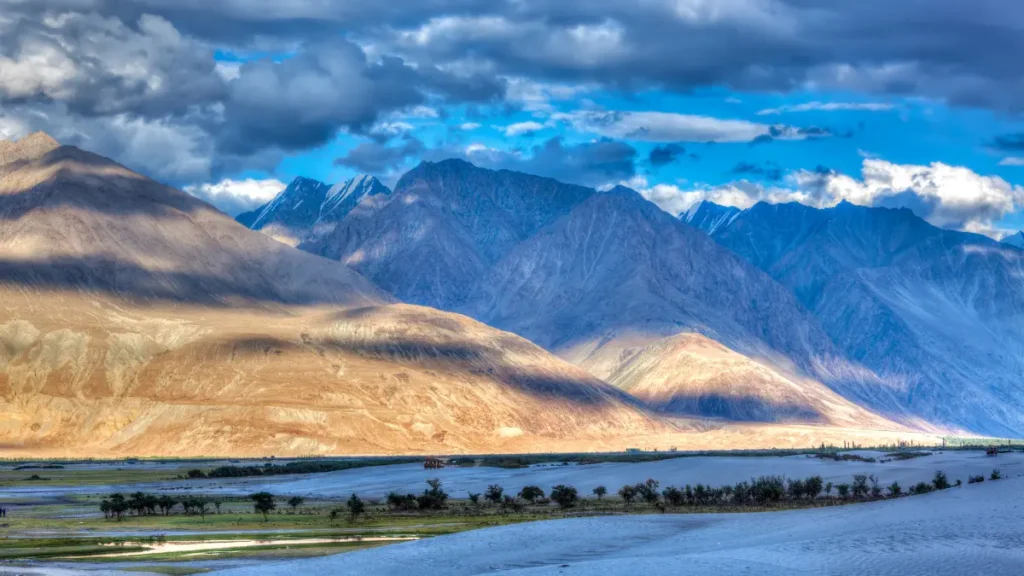
Day 5: Hundur Dok to Thang Lasgo:
· Trekkers experience the unadulterated beauty of Ladakh as they travel from Hundur Dok to Thang Lasgo. Pristine landscapes surround travellers on this leg of the journey, which offers solitude and a sense of connection with nature. The day ends with camping in Thang Lasgo, where travellers can take in the unspoiled beauty of their surroundings.
Day 6: Thang Lasgo to Sumur
· Trekking from Thang Lasgo to Sumur offers a variety of scenery, including peaceful valleys and craggy mountains. Trekkers are exposed to the local way of life through their discovery of Sumur hamlet and the cultural enrichment that comes with a visit to the Samstanling Monastery. You may taste Ladakhi hospitality by camping or staying at a guesthouse in Sumur at the end of the day.
Day 7: Sumur to Panamik
Trekking from Sumur to Panamik, the settlement is a sight to behold, renowned for its healing hot springs. Trekkers may experience Panamik’s distinct culture and soothing hot springs on this day, offering the ideal balance of adventure and leisure. One may engage with locals and learn about their everyday life throughout the overnight stay.
Day 8: Panamik to Hunder
· Trekkers will go through recognisable yet fascinating landscapes on their final day of trekking, which is the return trip from Panamik to Hunder. Participants consider the difficulties they overcame and the beauty they saw as the walk completes a full circuit. With Hunder, the hike comes to a suitable end, giving a moment of reflection on the road travelled.
Day 9: Hunder to Leh
On the way back from Hunder to Leh, you may stop at the picturesque Khardung La Pass and say goodbye to the enchanted surroundings of Nubra Valley. Trekkers may reminisce about their adventures and take in the town’s cultural offers when they return to Leh. Getting enough sleep is crucial to help participants get ready for their return home.
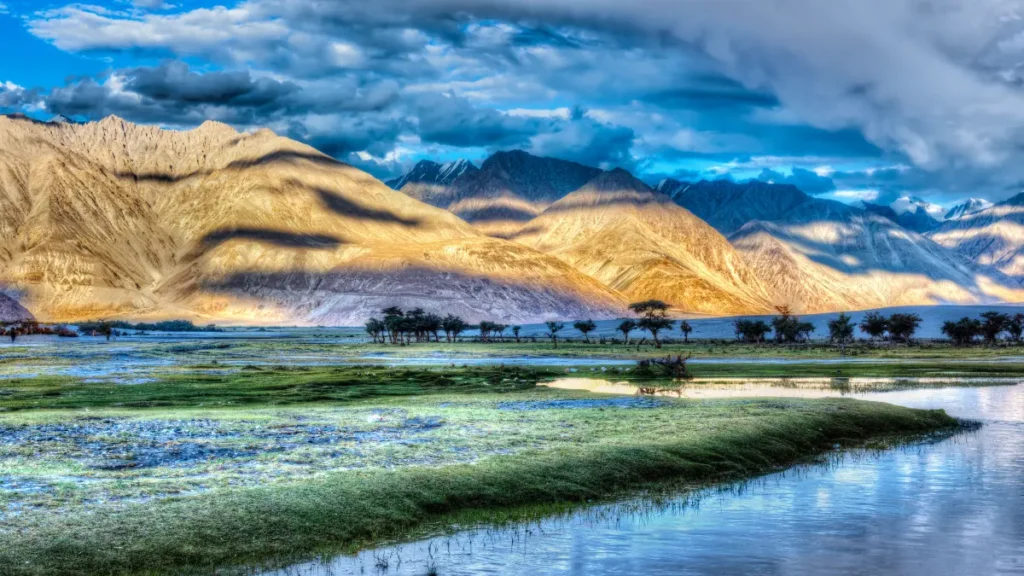
Nubra Valley Trek Cost
The complete Trek will cost you somewhere between 15,000 and 20,000 Indian rupees.
Nubra Valley Trek Distance
A complete length of 60 kilometres is covered in this beautiful Trek.
Conclusion
As the Nubra Valley trek ends, exploring Ladakh’s breathtaking scenery is more than just a physical adventure—an odyssey that speaks to the spirit. The journey offers a tapestry of spectacular beauty, from the stark grandeur of high-altitude terrains to the green embrace of Nubra Valley’s oasis-like towns. The journey begins with a thrilling climb over Khardung La Pass.
The journey, which goes from Hunder to Diskit, provides an opportunity to immerse oneself in Ladakhi culture, with its historic monasteries and vibrant local marketplaces as highlights. If you travel to Hundur Dok, the dry scenery and nighttime camping provide a sensory symphony combining wonder and seclusion.
The walkthrough of Nubra Valley surpasses the commonplace, leaving an enduring legacy of natural beauty and cultural diversity. It is an ode to wild beauty, tenacity, and the peaceful lap of the Ladakhi soul. Trekkers leave the Himalayan heights with more than just memories in tow; they also carry a deep connection to a place where the heartbeat of the mountains matches the sound of their footsteps.




